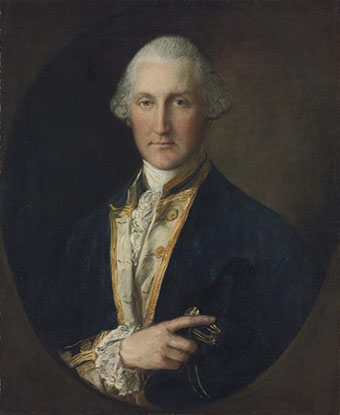Last updated: July 1, 2020
Person
William Campbell

A younger son of John Campbell, fourth duke of Argyll, William entered the Royal Navy in 1745 and served in India. As captain of the Nightingale, in 1763 he put into Charleston, where he met Sarah Izard, a rich heiress, whom he wed on April 17, 1763. Returning to Britain, he successfully ran for Parliament from Argyllshire. In 1766 the Rockingham administration appointed him governor of Nova Scotia, and in June 1773 his family’s influence secured his promotion to the governorship of South Carolina.
Campbell arrived in Charleston in June 1775. By then the revolutionary Provincial Congress and its Council of Safety had usurped royal authority, and Campbell faced impossible obstacles as governor. Rumors of arming Indians and slaves against the colonists complicated his task even further and eventually led revolutionary authorities to execute Thomas Jeremiah, a free black harbor pilot, who was accused of being a ringleader of the impending uprising. Governor Campbell was powerless to intervene. Campbell was, however, able to communicate with loyalists in the backcountry. His optimistic reports of their strength influenced British decisions to attack South Carolina in 1776 and 1780.
“The powers of Government are wrested out of my hands. I can neither protect, nor punish; therefore with the Advice of His Majys Council I apply to You & desire that in this dreadful emergency You will aid me with all the assistance in Your power, in enforcing the Laws, & protecting His Majys Servants.” Lord William Campbell on August 15, 1775 addressing the House of Assembly
After patriots learned of Campbell’s activities, he was forced to flee from Charleston on September 15, 1775. During the Battle of Sullivan’s Island in June 1776, Campbell commanded gun crews aboard the Bristol and received wounds from which he never completely recovered. He died in Southampton, England in September 1778, the final casualty of the battle.
